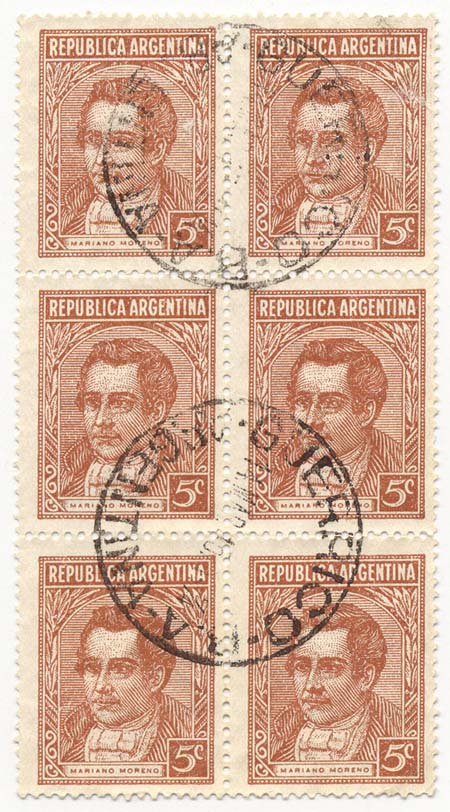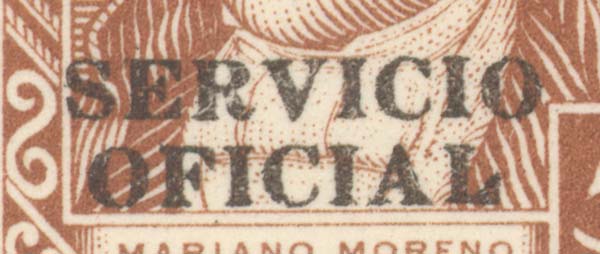Página 5 de 9
Goma rayada
Publicado: 03 May 2009 08:09
por Rein
Arabic gum may prevent the printing sheets from keeping flat after some time and apart from using special types of gum an often used method was to "break' the arabic gum immediately after applying it by hitting the paper by knives to make diagonal straight cracks. In some countries a special pattern was imprinted from the gummed side on the stamp paper. This had been practised for Austrian and Swiss stamps among others.
For the Argentinean 1935 definitives we find a similar pattern on the gum that even reflects in the paper itself - even at the front of the stamp!
The 1c Domingo Faustino Sarmiento:
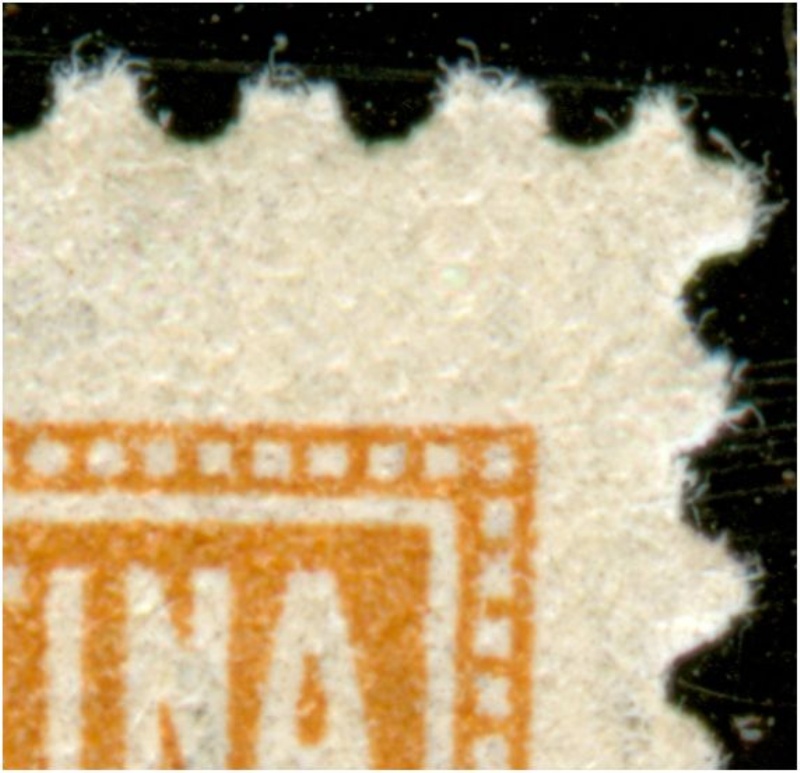
and the 20c Guillermo Brown:
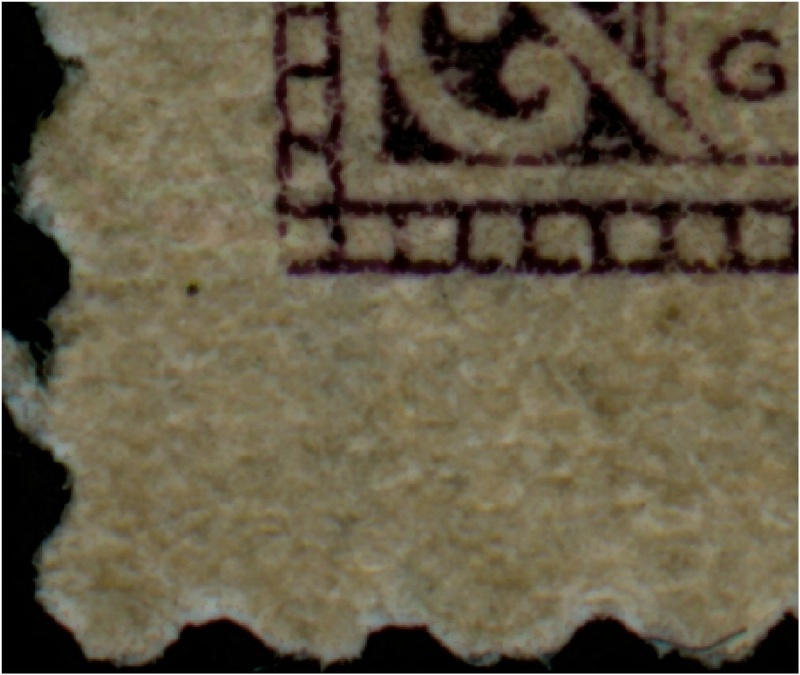
The pattern looks like a set of hexagonals on a 25 degrees slope upwards from left to right...
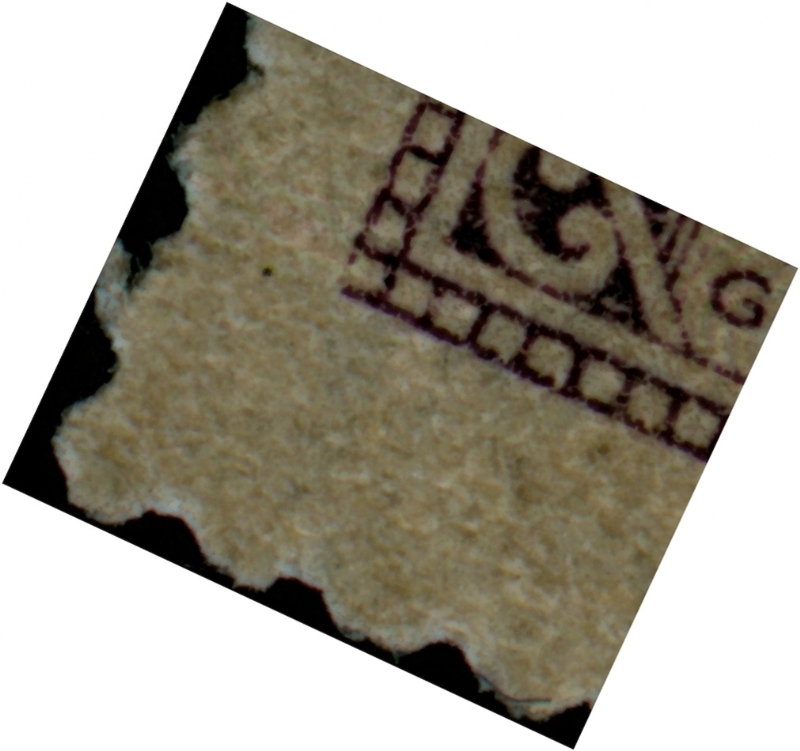
Re: Goma rayada
Publicado: 03 May 2009 10:48
por Rein
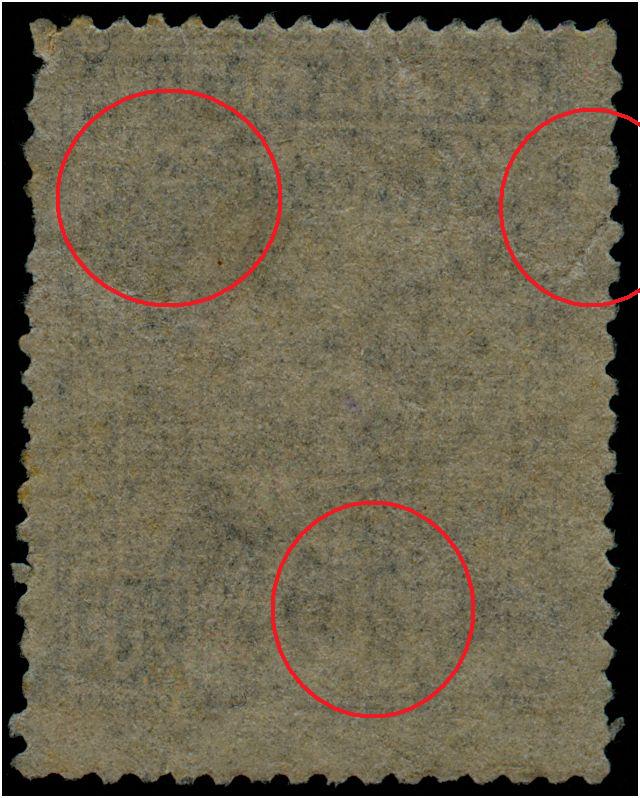
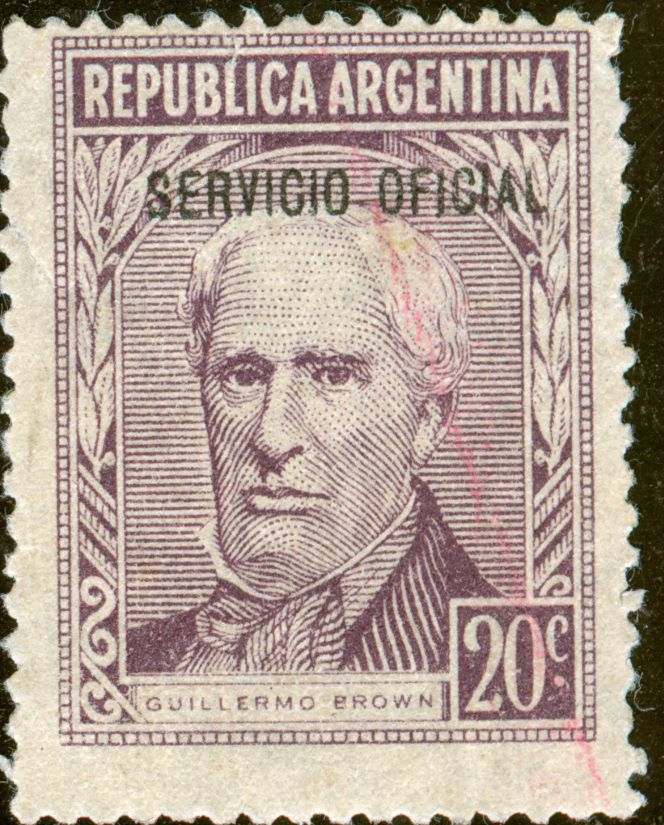
Looks like an asymmetrical wire, orthogonal watermark! The 20c has the first type (thin white line at the bottom above the name box] and thus the large design size. You can even see the "diagonal" of the hexagonal gum breaking!
Re: Goma rayada
Publicado: 03 May 2009 11:31
por Rein
And the 1c DF Sarmiento is quite similar though the watermark is not that clear:
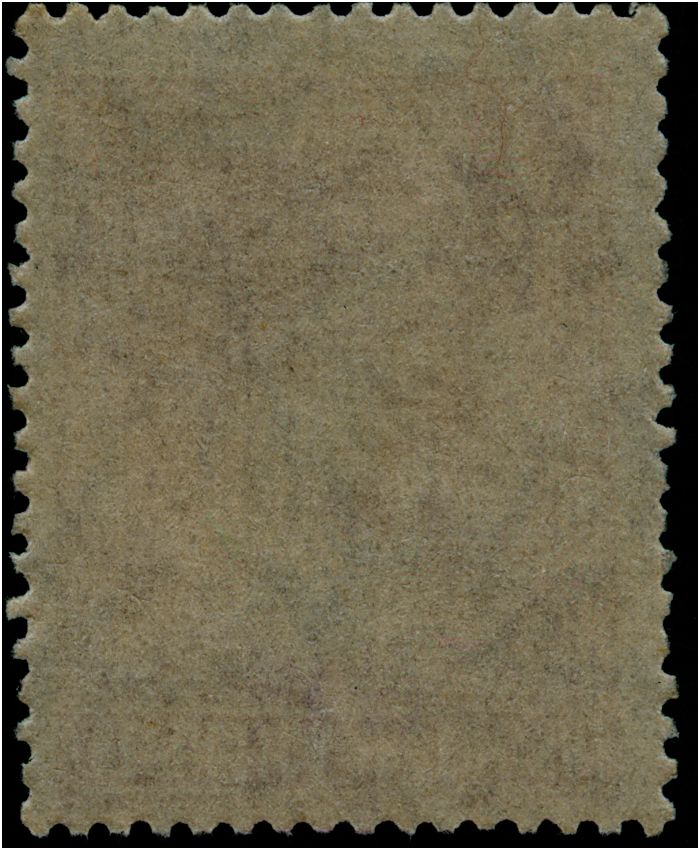
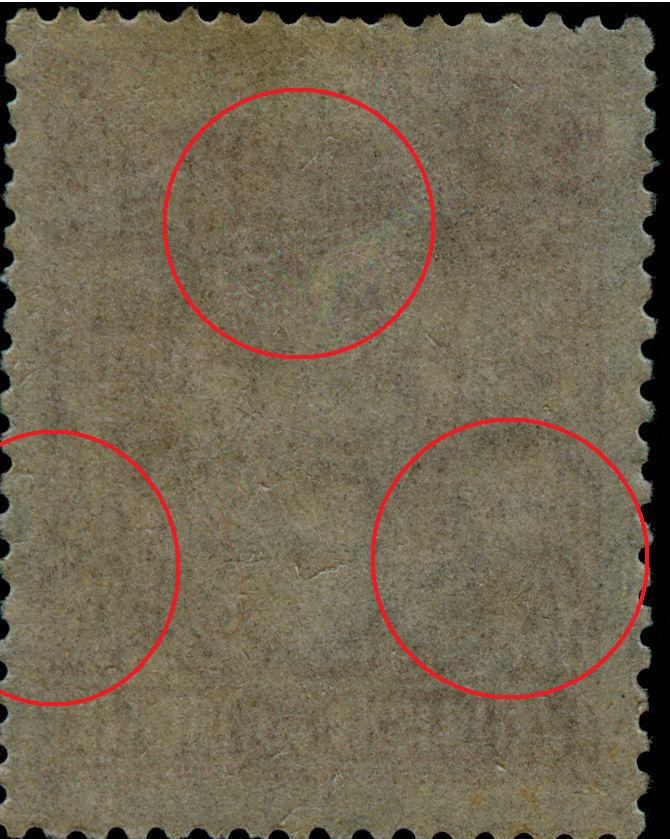
Looks also like an asymmetrical wire, orthogonal watermark!
Re: estudio de los papeles de PyR I
Publicado: 20 May 2009 15:36
por Andresteban
Muy bueno el estudio de papeles y filigranas! tengo uno que no parece tener filigrana, pertenece a otra tirada o algo así? El papel parece tizado, y encima no le agarro la mano al escaner por el tema de las filis, pero ahí va:
frutas.jpg
frutassinf.jpg
Re: estudio de los papeles de PyR I
Publicado: 20 May 2009 15:51
por zeus25971
efectivamente los sellos sin filigrana de la serie son de una tirada posterior ( estoy casi seguro que es papel nacional, tony corregime sin no es asi ), años 1945/48. Si te fijas son los # petrovich 451/458 . Los valores chicos sin fili son del 471/76. Si queres meterte un poquitin mas, fijate que hay dos tipos de sin filigrana, unos en donde se nota la trama del papel, y los otros en donde la trama del papel es invisible.
Cualquier cosa chifla
Saludos
Luis
Re: estudio de los papeles de PyR I
Publicado: 20 May 2009 16:13
por rubiera
Dificil comentar sobre este sello sin un buen escan del reverso en alto contraste, pero por el color me parece de las ultimas tiradas sobre papel Zarate, el cual se le ve tan poco la filigrana que puede pasar facilmente por uno sin ella.
Los sin filigrana de 1945/48 tienen el marco de color marron, y tambien el tizado super raro de 1943. El tizado/satinado de 1952 tiene colores muy claros y la plancha con lavado de acido....asi que sin mas informacion digo Zarate.
Aqui esta un 2 pesos 1E1 de 1936, con los mismos colores de los NGR/NOP sin filigrana (NGR con trama, NOP sin ella).
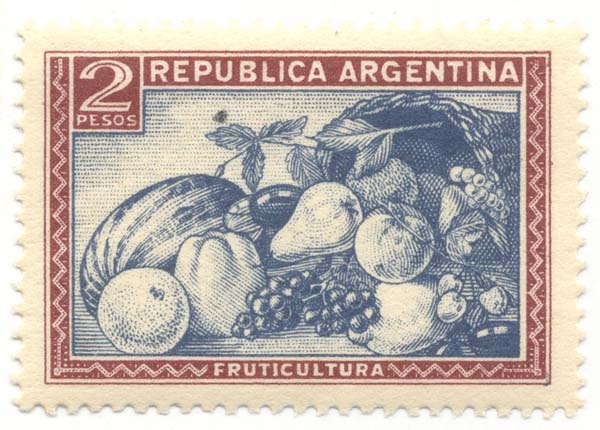
Aqui esta el tizado/satinado de 1952 (2PCL2B-SO).
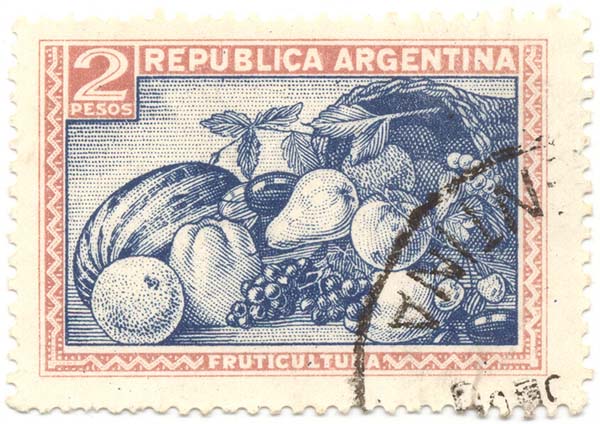
Re: estudio de los papeles de PyR I
Publicado: 20 May 2009 19:54
por Andresteban
le hice un scaneo con mucho contraste y sinceramente no veo filigrana, pero la subo para que opinen, no me quedé tranquilo, porque vi en el mello que hay unas 39 razones ( verdes ) si es así

Miren el resultado, con otra igual ( por delante

)

The 1943 Revolution series - types of paper
Publicado: 25 May 2009 08:31
por Rein
The coated papers for the PyR I series are not quite explained so far. The earliest in 1939 for the typography 5c and then a big gap till 1943...
In the commemoratives in the 1935-1944 period there are only the 4th of June 1943 revolution stamps issued in July already! The 3 stamps [5c, 15c, 20c] have a coated paper that shows at the front a pattern of horizontal bars. The watermark is supposed to have a multiple sun + AЯ - it does! - but I do not expect anybody to have checked it really as you can barely see it. Just trust your favourite catalogue be it Samowerskyj or Petrovich or Tello Meggia....
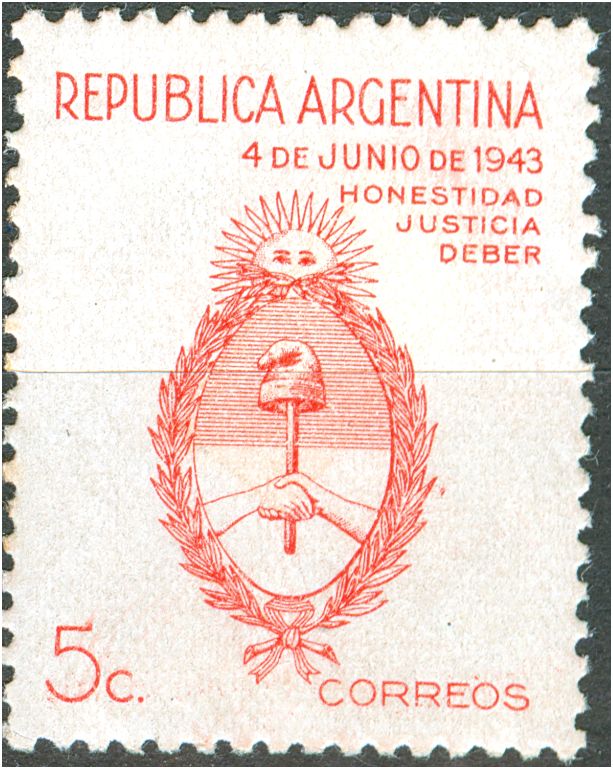
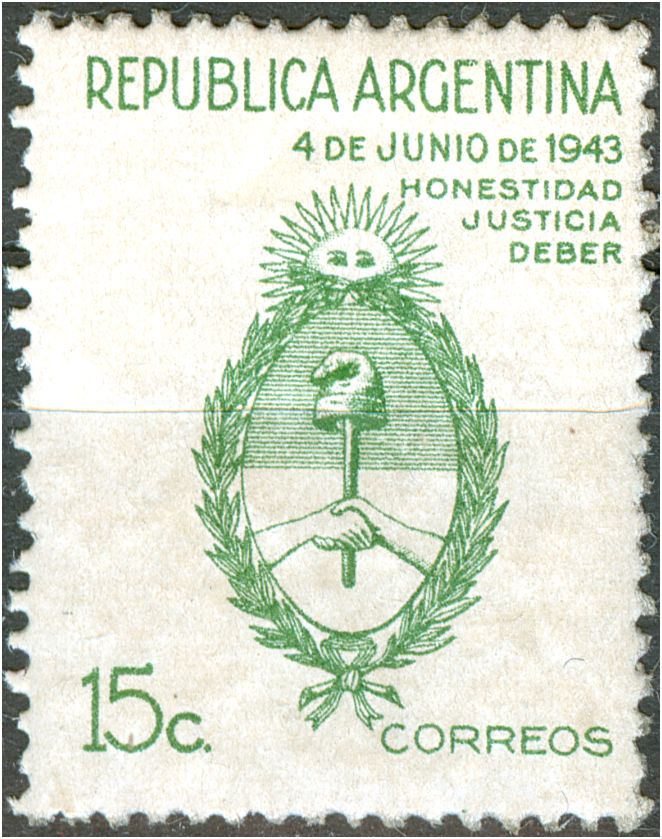
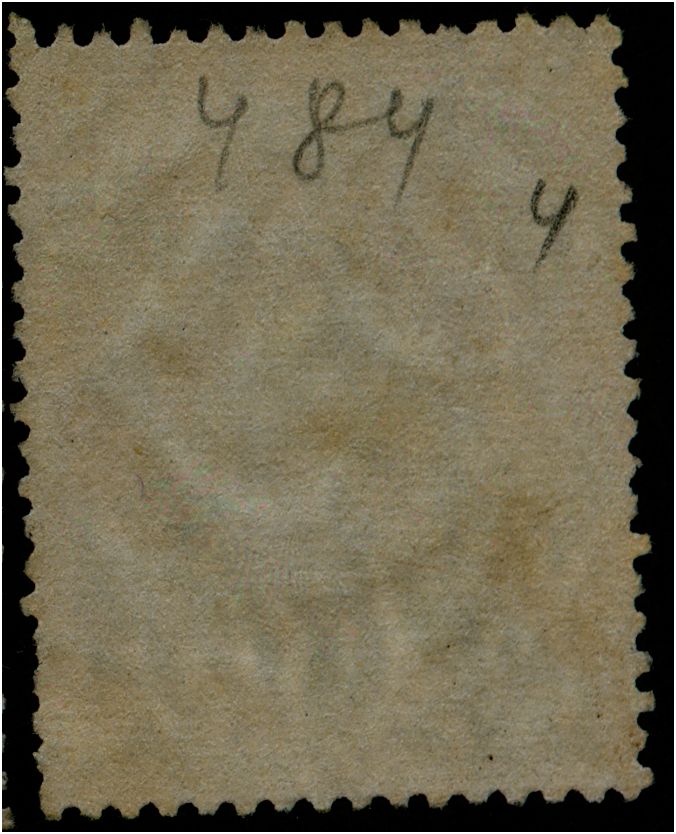
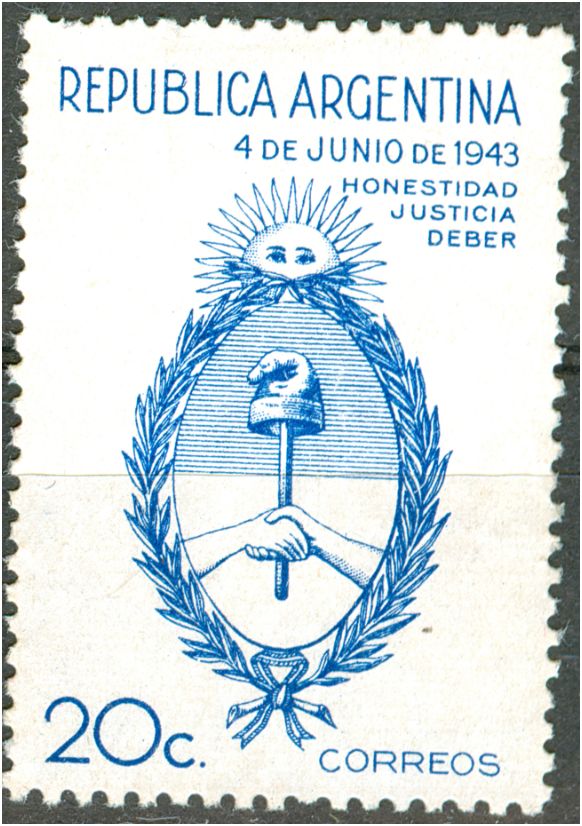
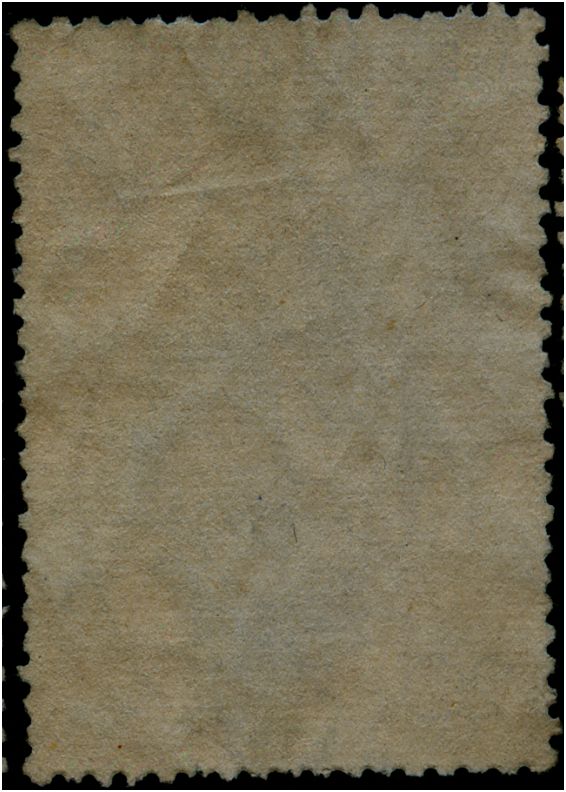
As we can see the watermark is orthogonal (line of AЯ horizontal ; direction of paper vertical hence perpendicular or orthogonal) and the paper wire is asymmetrical [see the horizontal lines!].
The 1941-1944 commemoratives had 2 types of paper:
- parallel, symmetrical wire with a loose web: 24/20 lines hor./vert. described by Dario A. Bardi as "tela"
- orthogonal, symmetrical wire with a tight web: 30/20 lines hor./vert. WRONGLY described as "rayos rectos"!
I have seen NO other type of paper so far for the commemoratives. The 1945-1947 period has only unwatermarked paper!
Reprints from 1948 and later can show the so-called "straight-rays" or "Rayos Rectos" that have not so much straighter rays than the other watermarks but rather a slighty longer diagonal rays.... Much more important to recognize this is the whitish appearance from the back of stamp [no gum to annoy us, please!] and the almost shaven character of the paper surface - you get the impression to see inside the paper itself! If the surface of the back is completely smooth, equal, then you have a different type of paper at hand... And the R.R. have a asymmetrical wire as well...
Reprints [?] of the 5c red of the June Revolution set - in the same year already - have uncoated paper - referred to a "mate" in Argentinean catalogues - with 2 options:
Symmetrical wire and orthogonal watermark:
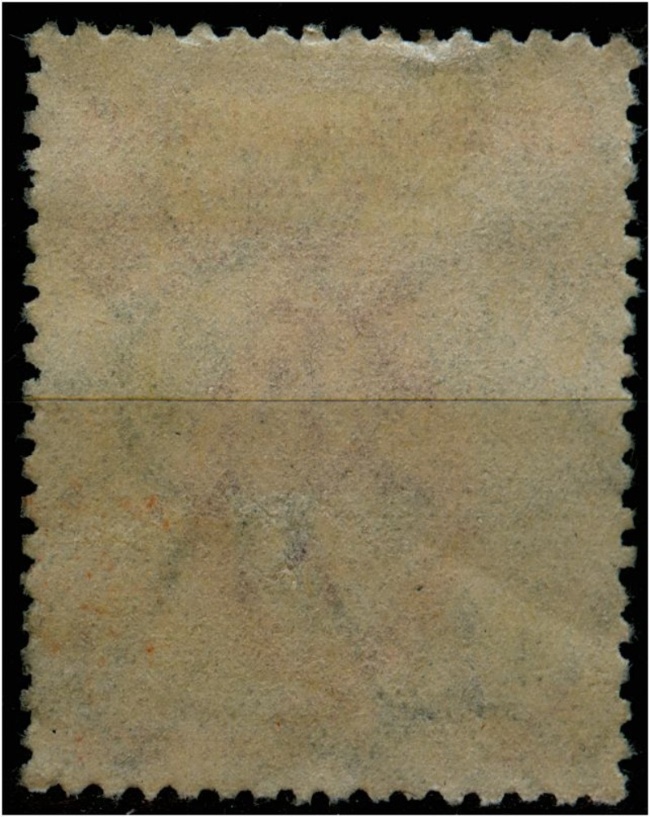
Symmetrical wire and parallel watermark, coarse lines 24/20 also know as "tela":
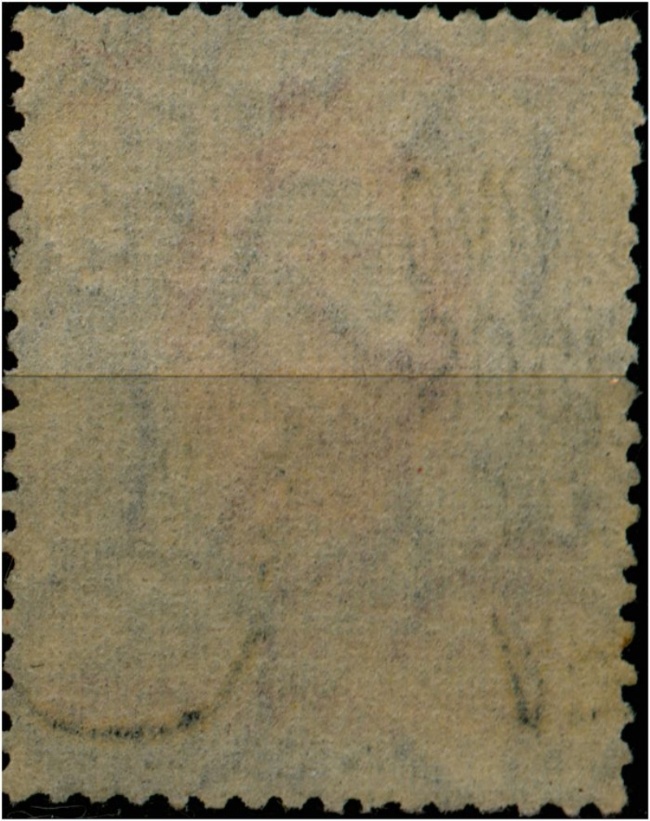
Both completelty in line with the types of paper of the 1941-1944 period
5c Moreno in chestnut-brown types of paper
Publicado: 01 Jun 2009 12:34
por Rein
The catalogization of the 5c Moreno in the Mello Teggia drives me crazy and I have only just started! I am expecting even more confusion when digging into the 10c Rivadavia I suppose

Reading the 1979 Samowerskyj it is obvious that whatever was thought to be true about certain stamps is copied year after year without really a critical look!
as to the 5c Moreno, no changes in 30 years!
The 5c Moreno can be found under the following cryptocodes:
368 - ???? litografiado ???
368I - tipografiado; papel mate lustroso
368IX - tipografiado; papel tizado; castaño claro
How do I recognize them??? Is anybody able to tell the difference between 368 and 368I??? Recognizing the coated paper maybe not that difficult

As to the Servico Oficial versions they all have the 12mm "overprint":
368 - litografiado
368I - tipografiado
-- - litografiado; rayos rectos
-- - litografiado; sin filigrana
The 2 last variants do not exist without the Servicio Oficial as it was a NEW printing in a bi-coloured offset-litho.
Re: 5c Moreno in chestnut-brown types of paper
Publicado: 01 Jun 2009 16:05
por Rein
Chronologically, we should find:
In offset-litho, only 1 printing order made in 1935: parallel watermark, symmetrical paper wire = 1E1.
In typography the first printing order (tiraje) [consisting of 12 separate printings (impresión), starting with 19.03.1937]: parallel watermark, symmetrical paper wire = 1E1.
According to Leopoldo Tenorio Casal in his article "Valores tipografiados y estereotipados de la Emisión Postal Argentina Emitida desde 1935" the second printing order of the 5c in typography started 03.04.1939. It did consist of 6 printings. Some of them for booklet-panes (20.10.1939). The paper was supposed to be coated [tizado] and originating from the 1st production. What does that mean???? The first production???
The 3rd printing order of 24.03.1940 in typography was on normal paper, amarfilado [ivory?] in 3 printings: orthogonal watermark, symmetrical paper wire = 1E4. Bardi calls this type of paper "mate lustroso".
A 4th printing order of 06.09.1943 consisted of 5 printings, some of them for booklet-panes. The paper was supposed to be coated [tizado] and originating from the 3rd production. What does that mean???? The third production??? When was the second production????
As in 1945 the 5c José de san Martin appeared, there wasn't much time for more printings. At least not for printings in offset-litho!
However, several printing orders must have been made for the bi-coloured, offset-litho printed stamps with "Servicio Oficial". They have not been described by D.A. Bardi though......
Re: 5c Moreno in chestnut-brown types of paper
Publicado: 01 Jun 2009 20:43
por rubiera
El 5c1E1t-SO y el 5c1E3-SO
El primer 5c Moreno 'Servicio Oficial' proviene de 1938 y esta impreso sobre el papel 1E1 tipografiado, algo comun nuevo, pero no tan comun usado.

Aqui esta cancelado en 1938.

Esta es una impresion de la plancha sucia.

El segundo 5c Moreno 'Servicio Oficial' es tipo offset sobre el papel 1E3.

Aqui esta una variedad de plancha.
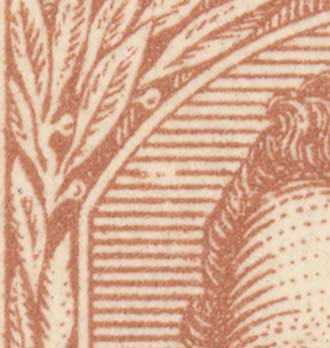

Re: 5c Moreno in chestnut-brown types of paper
Publicado: 01 Jun 2009 20:46
por rubiera
El 1E4 5c Moreno 'Servicio Oficial'
Esta impresion es la mas comun de las cinco impresiones 'Servicio Oficial.' El papel 1E4 parece tela. Estos sellos tienen agujeros de perforacion peque~nos.

Con O de 'SERVICIO' deformada.



Con segunda impresion como sombra.


Fechada 1944.

No conozco esta marca postal.

Re: 5c Moreno in chestnut-brown types of paper
Publicado: 01 Jun 2009 20:48
por rubiera
Re: 5c Moreno in chestnut-brown types of paper
Publicado: 01 Jun 2009 20:50
por rubiera
El NGR 5c Moreno 'Servicio Oficial'
Este sello recibio poco uso postal. La mayoria de los que tengos son nuevos.
Impresion limpia.

Descolorida, tipica.

L de 'Oficial' alargada.



Re: 5c Moreno in chestnut-brown types of paper
Publicado: 01 Jun 2009 20:58
por rubiera
El 5c 1E1 de 1935

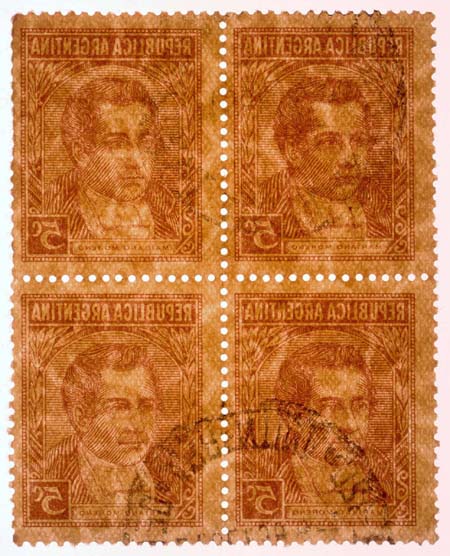
El 1E1 tipografiado de 1937
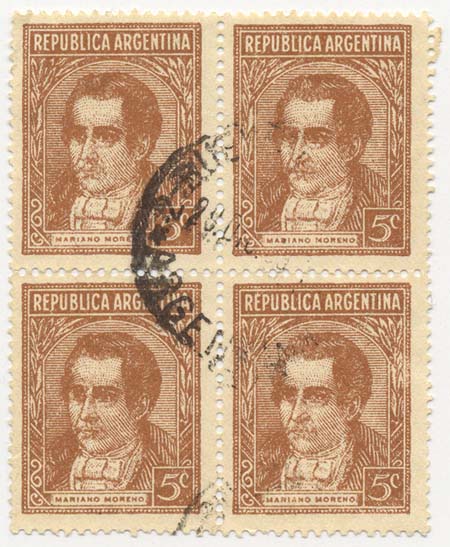
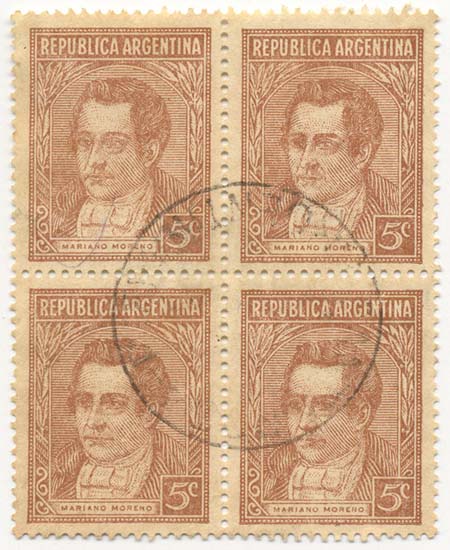
El 1E4 de libritos

El primer tizado de 1939
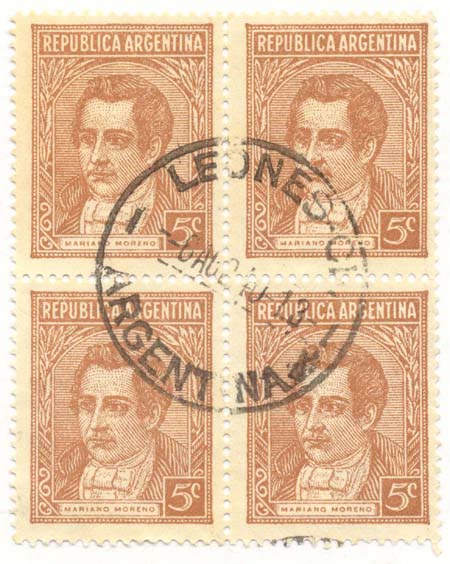
El segundo tizado de 1943
